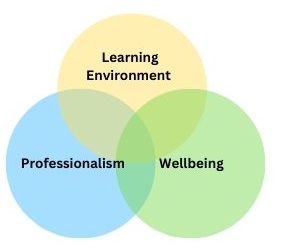Creating a Positive Learning Environment

A Faculty Guide
Kindness, respect and cultural humility are among the tenets that help inform our University of Vermont Larner College of Medicine Professionalism Statement. As we
strive to embody these tenets in our daily interactions, our learning environment inevitably improves. In that spirit, we have compiled a list of strategies, i.e., things to say – and not to say – that we hope can be helpful as we
all work together to create and maintain a positive learning environment, free of mistreatment, for all our trainees.